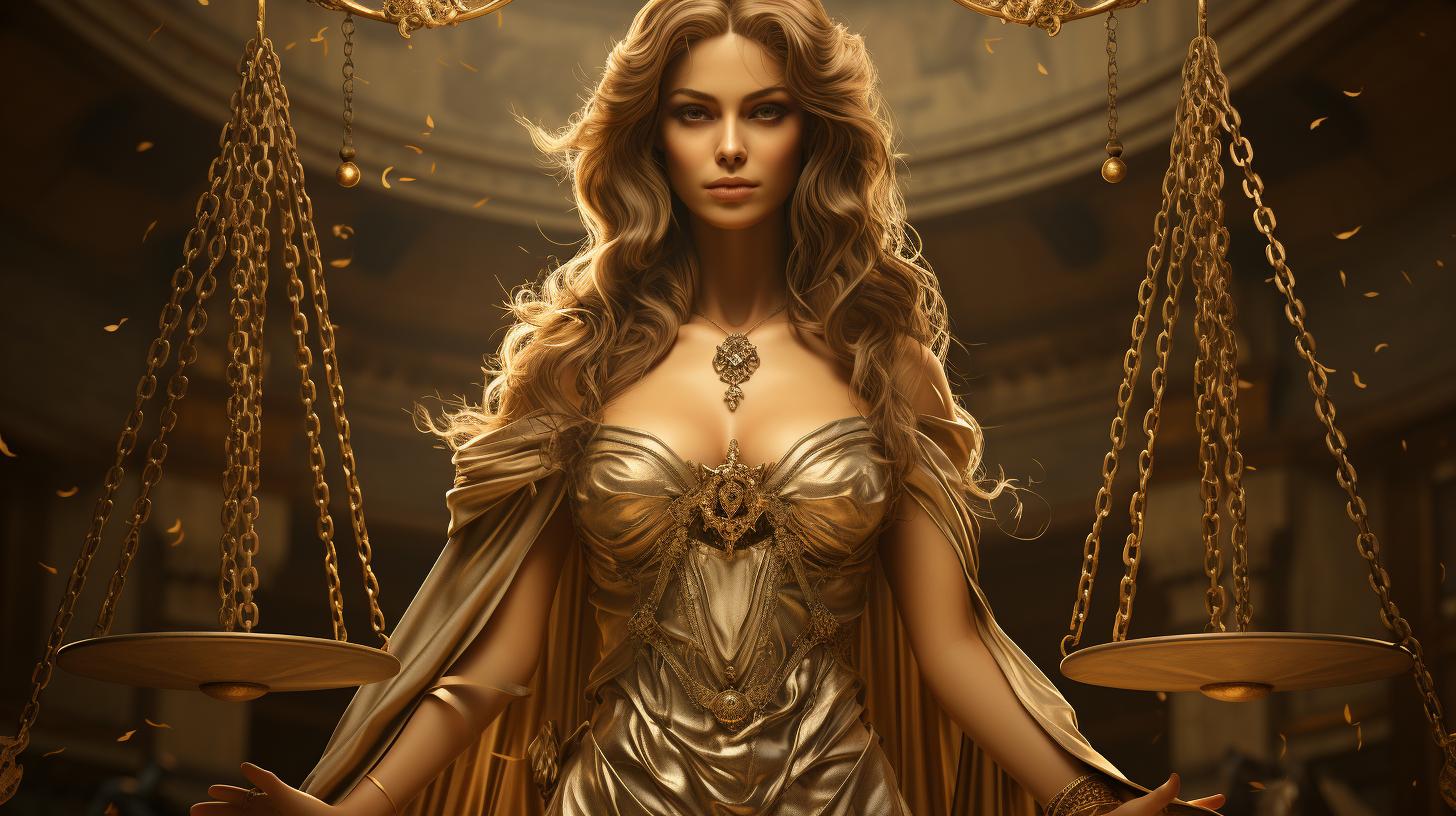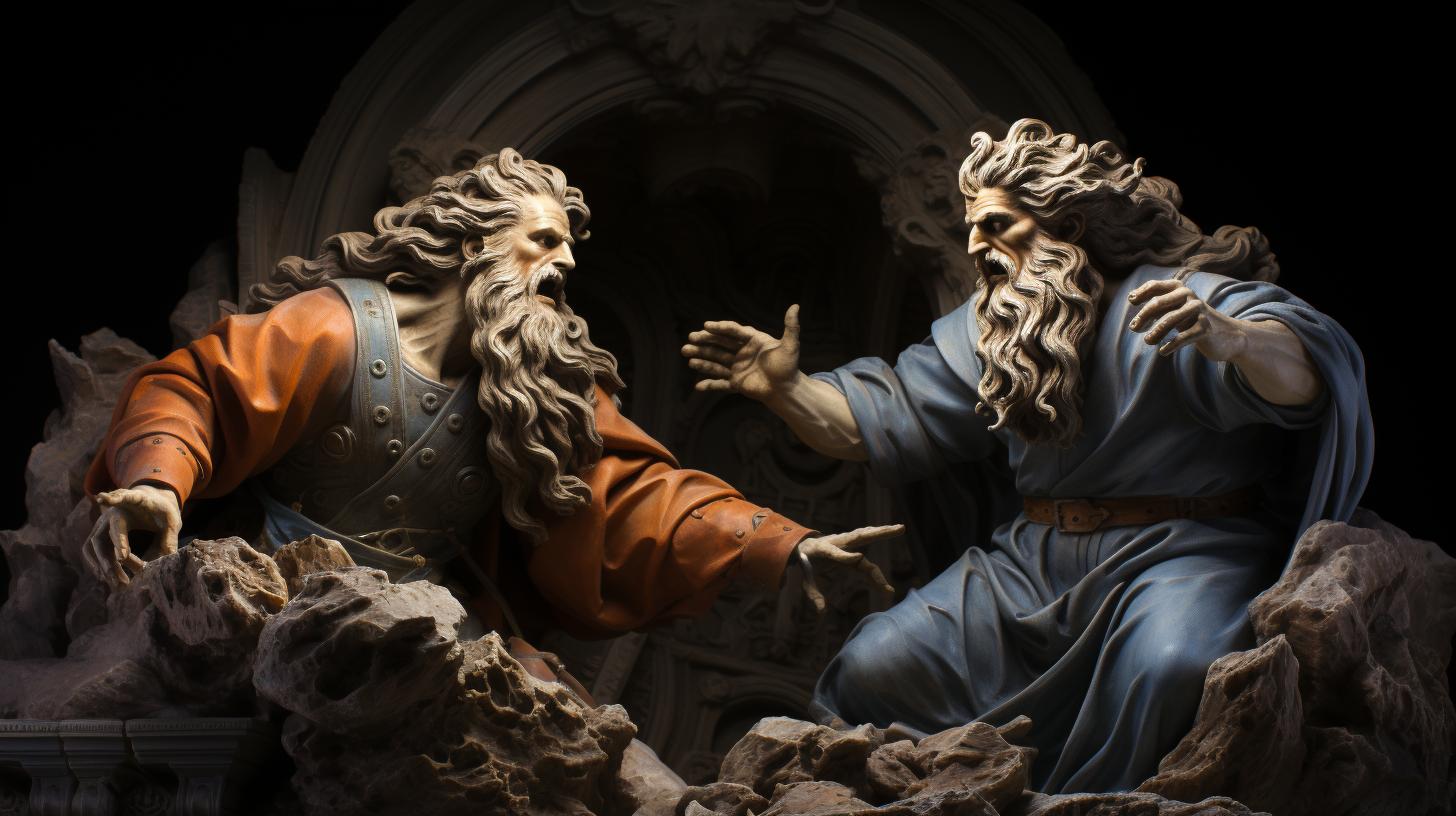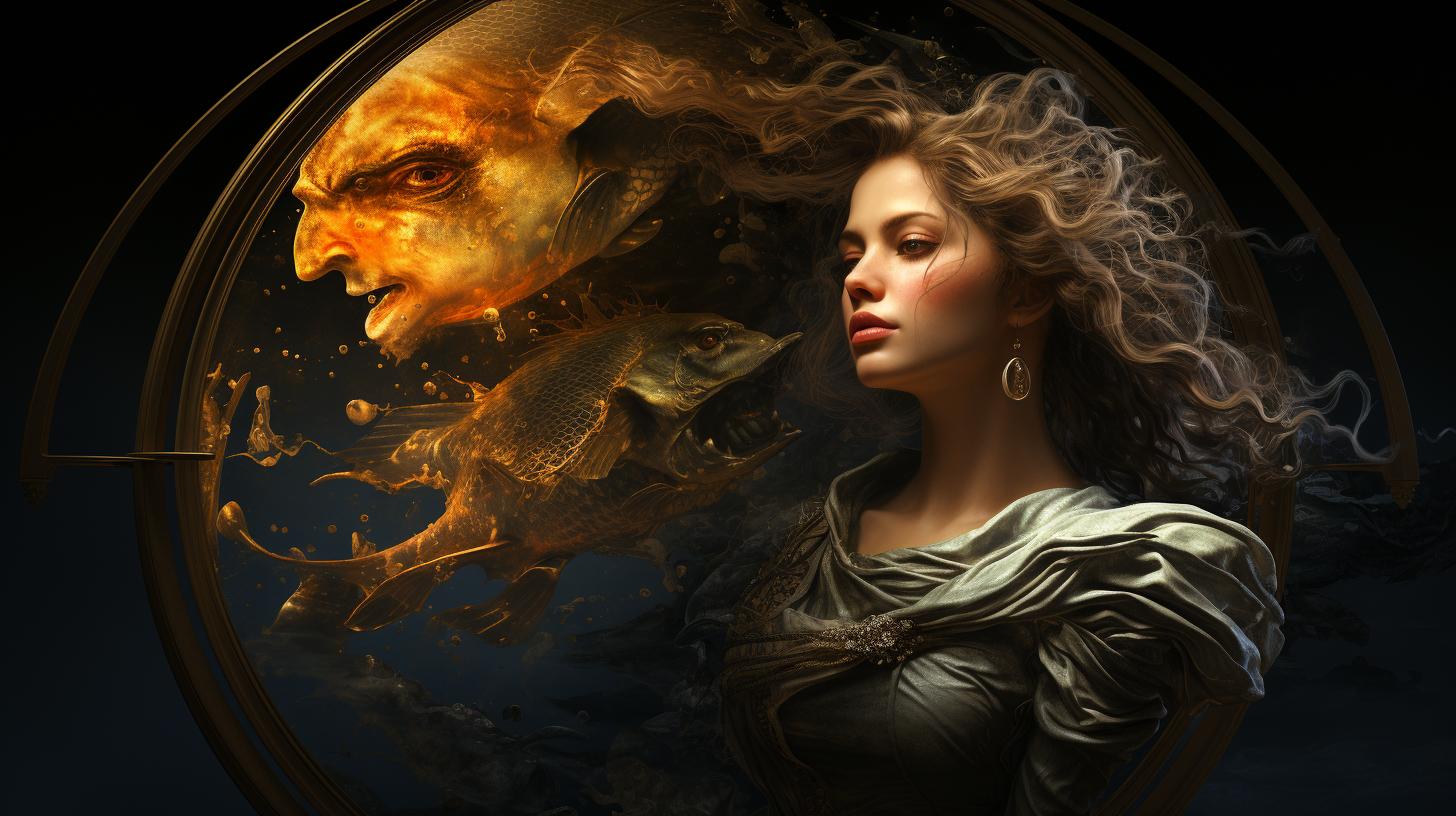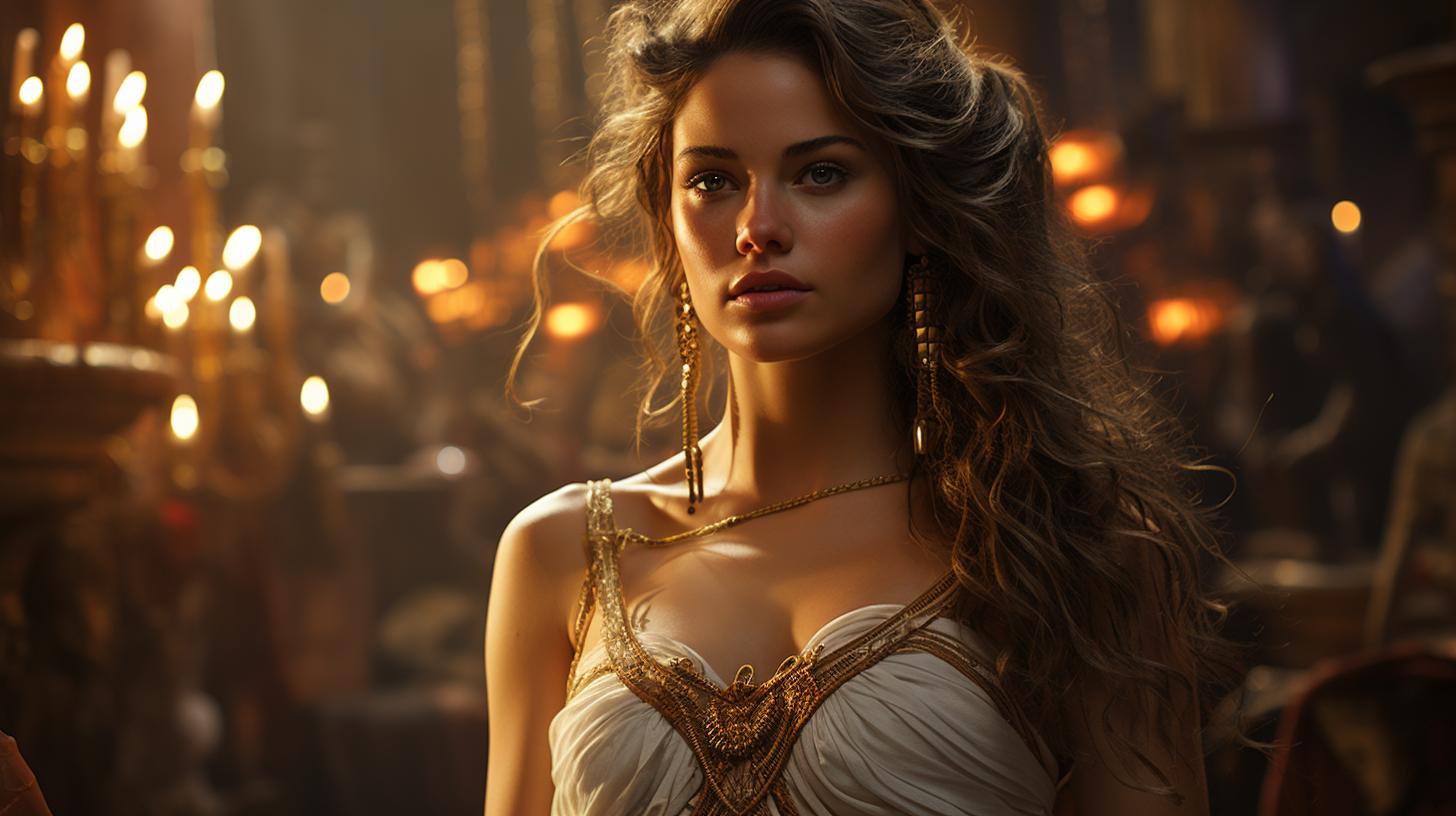Dike Greek Goddess of Justice: An Insight into the Mythological Figure
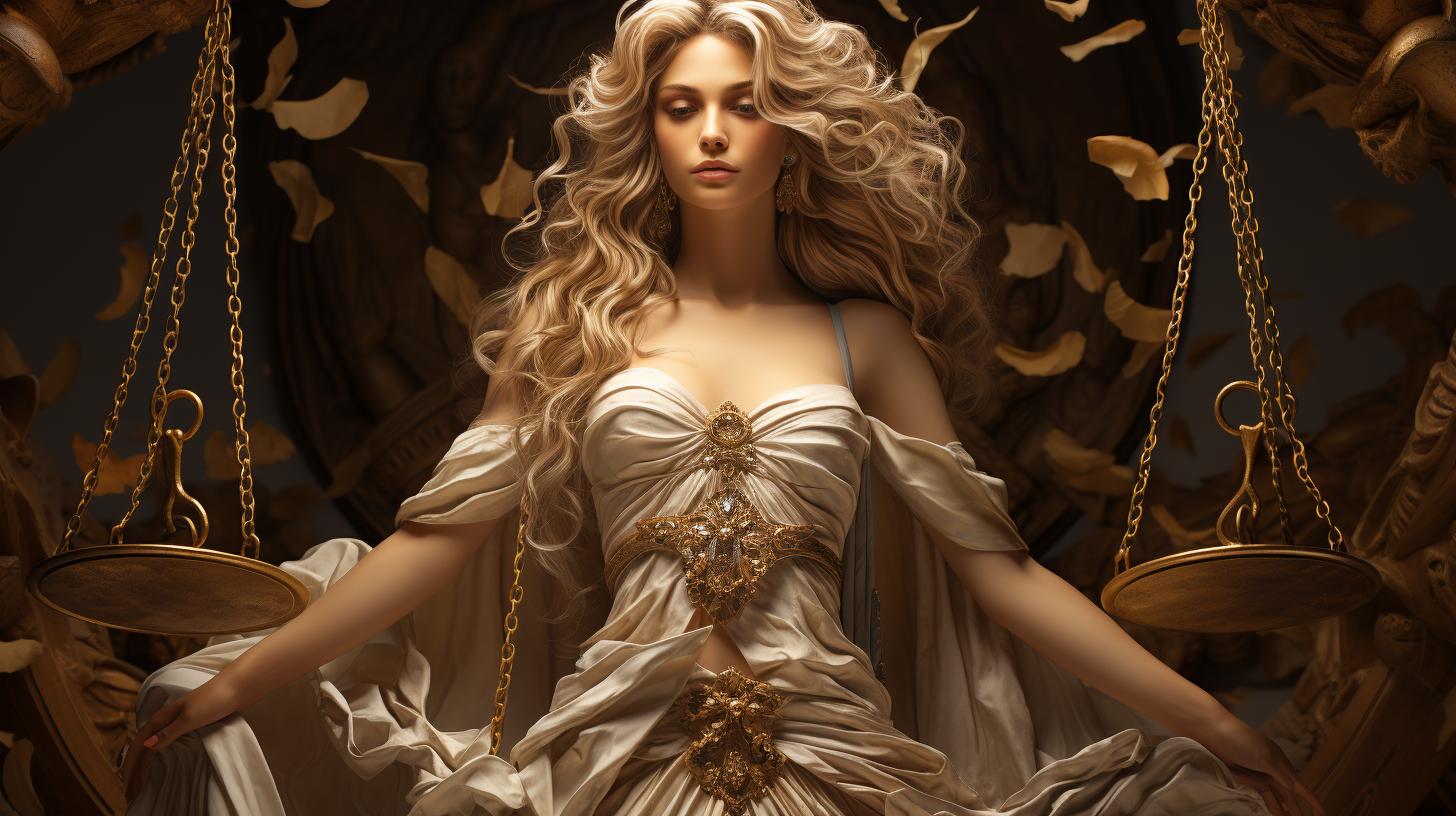
Dike Greek goddess of justice is a prominent figure in Greek mythology. As one of the Horai, she guards the gates of heaven alongside her sisters Eunomia and Eirene. Dike, daughter of Zeus and Themis, symbolizes the growth of spring and is associated with justice and truth.
In art and literature, she is depicted as a beautiful goddess wielding a staff and balancing the scales of justice. Dike’s role as a divine arbiter of justice and her association with innocence and purity make her a significant deity in ancient Greek culture.
Overview of Dike Greek Goddess of Justice
In this section, we will delve into the fascinating world of Dike, the Greek goddess of justice. Discover the mythical background surrounding Dike and her significance in ancient Greek culture and religion.
We will explore the various aspects and associations of Dike in mythology, shedding light on her role as a divine figure and her impact on the mortal realm.
Introduction to Dike and Greek mythology background
Let us begin by introducing Dike, the Greek goddess of justice, and exploring her origins within Greek mythology.
Through a deeper understanding of her background, we can gain insights into the development of her character and the beliefs associated with her divine presence.
Significance of Dike in ancient Greek culture and religion
Dike held immense significance in ancient Greek culture and religion.
Dive into the cultural and religious context to grasp the central role Dike played in the lives of the Greeks. Discover how her embodiment of justice influenced their societal values, legal systems, and the pursuit of moral integrity.
The various aspects and associations of Dike in mythology
Explore the multifaceted nature of Dike in Greek mythology and the various aspects and associations attributed to her. Uncover how Dike’s symbolism extends beyond justice, intertwining with concepts such as the seasons, gateways to heaven, and the pursuit of righteousness.
We will unravel the diverse dimensions of her character, shedding light on her symbolic interactions within the mythological realm.
- Parentage and conflicting narratives
- Siblings of Dike: Eunomia and Eirene
- Nomos and Eusebia as possible alternative parents
Gain insight into Dike’s family background and the conflicting narratives surrounding her parentage.
Dive into the significance of her siblings Eunomia and Eirene and their collective roles within the divine hierarchy. Additionally, we will explore alternate beliefs suggesting Nomos and Eusebia as possible alternative parents of Dike.
Discover the role and attributes of Dike, the Greek goddess of justice. Uncover her association with the seasons, her connection to Dikaiosyne and Astraia, and her role as an adversary of falsehoods.
Understand her pivotal role as a protector of just administration and her pursuit for a fair and balanced society.
The portrayal of Dike in the ‘Cipselo Chest’
Delve into the artistic representation of Dike, specifically her depiction in the ‘Cipselo Chest.’ Explore how artists captured her beauty and portrayed her as a powerful goddess, symbolically punishing Adicia while holding a staff.
The symbolism of Dike’s laurel crown, balance, and staff
Examine the symbolism behind Dike’s laurel crown, balance, and staff. Understand the significance of these attributes in conveying her role as the embodiment of justice and the order she represents. These symbols serve as visual reminders of her importance in maintaining fairness and the consequences that result from violating it.
Roman influence: The blindfolded depiction and the Statue of Justice
Discover the Roman influence on the portrayal of Dike, which introduced the blindfolded depiction often associated with the Statue of Justice. Explore the origins and symbolism behind this adaptation, which has become a prominent representation of justice in modern courtrooms.
Uncover Dike’s alternate name as Astraea and her association with innocence and purity. Explore her presence during the golden and silver ages, guiding humanity towards a just life. Learn about her ultimate retreat to the constellation of Virgo, where she observes the affairs of humanity from afar.
- Astraea as an alternate name for Dike
- Dike’s association with innocence and purity
- The departure from the mortal world and observation from Virgo
Embark on a journey to understand Dike as a divine arbiter of justice.
Explore her ability to observe and punish wrongdoing, her influence on laws, and her role in deciding the fate of individuals after death. Witness the belief in divine justice and the consequences that await those who stray from the path of righteousness.
Dike’s Origins and Family
Dike, the Greek goddess of justice, has a complex and intriguing origin intertwined with various narratives and conflicting accounts. Let’s delve into the different aspects of her parentage and explore the potential alternative parents attributed to her.
Parentage and Conflicting Narratives
According to prevalent mythological beliefs, Dike is commonly regarded as the daughter of Zeus and Themis. However, there are intriguing mentions of Nomos and Eusebia as potential alternative parents.
These conflicting narratives add an element of mystery to Dike’s lineage, leaving room for interpretation and speculation.
Siblings of Dike: Eunomia and Eirene
Dike has the distinction of being part of a divine trio, with Eunomia and Eirene as her prominent sisters. Eunomia represents good governance and lawfulness, while Eirene symbolizes peace and harmony.
Together, they embody the ideals of order and tranquility in Greek society, complementing Dike’s role as the goddess of justice.
Nomos and Eusebia as Possible Alternative Parents
Some sources suggest that Nomos, the personification of law and custom, as well as Eusebia, the embodiment of piety and reverence, could potentially be Dike’s parents. These alternative parentage theories reflect the significance of Dike’s association with justice and the adherence to laws and moral principles.
- Dike as the daughter of Zeus and Themis
- Possible alternative parents: Nomos and Eusebia
- Dike’s sisters: Eunomia and Eirene
Dike’s Role and Attributes
Dike, the Greek goddess of justice, embodies several significant roles and possesses distinctive attributes within Greek mythology.
Dike’s association with the seasons and gateways of heaven
In Greek mythology, Dike is closely associated with the changing seasons and is considered one of the Horai, the goddesses of the seasons. As a guardian of the gates of heaven, she ensures the smooth transition between seasons and the harmony of nature.
Dike’s presence signifies the arrival of spring, symbolizing renewal and growth.
Connection to Dikaiosyne and Astraia
Dike is intricately connected to the concept of Dikaiosyne, which represents the moral and legal aspects of justice in Greek society. As the embodiment of justice, Dike upholds the principles of righteousness and fair treatment.
Additionally, she is often associated with Astraia, the goddess of innocence and purity.
Dike as an adversary of falsehoods and protector of just administration
Dike stands as a formidable foe against deception and falsehoods. She is the guardian of truth and integrity, ensuring that justice is administered fairly and without bias. Dike’s role involves protecting the rights of individuals and maintaining order within the judicial system.
Her influence extends beyond earthly matters, as she also oversees the just administration of divine justice.
Dike’s Representation in Art and Literature
Dike, the Greek goddess of justice, has been depicted in various art forms and mentioned in notable literary works. These representations provide us with insights into her appearance, symbols, and cultural significance.
The portrayal of Dike in the ‘Cipselo Chest’
In the artistic depiction known as the ‘Cipselo Chest’, Dike is portrayed as a beautiful goddess. She is depicted with one hand dragging Adicia, the embodiment of wrongdoing, and in the other hand, she holds a staff to strike her.
This imagery symbolizes Dike’s role as a righteous judge and enforcer of justice.
The symbolism of Dike’s laurel crown, balance, and staff
Dike is often represented wearing a laurel crown, which signifies her association with victory and honor. The balance she holds represents her duty to weigh evidence and make fair judgments. Additionally, the staff she carries symbolizes her authority and power in maintaining law and order.
Roman influence: The blindfolded depiction and the Statue of Justice
Under Roman influence, Dike’s portrayal took on some modifications. The Romans introduced the blindfold, which became a prominent symbol of impartiality in the depiction of justice. This can be seen in the iconic Statue of Justice commonly found in courthouses.
The blindfold represents the objective nature of justice, blind to personal biases and prejudices.
Dike’s representation in art and literature offers a visual and symbolic understanding of her significance as the goddess of justice.
These depictions serve as a reminder of the importance of impartiality, fairness, and the enforcement of justice in society.
Dike, the Greek goddess of justice, has been depicted in various art forms and mentioned in notable literary works.
These representations provide us with insights into her appearance, symbols, and cultural significance.
The portrayal of Dike in the ‘Cipselo Chest’
In the artistic depiction known as the ‘Cipselo Chest’, Dike is portrayed as a beautiful goddess. She is depicted with one hand dragging Adicia, the embodiment of wrongdoing, and in the other hand, she holds a staff to strike her.
This imagery symbolizes Dike’s role as a righteous judge and enforcer of justice.
The symbolism of Dike’s laurel crown, balance, and staff
Dike is often represented wearing a laurel crown, which signifies her association with victory and honor. The balance she holds represents her duty to weigh evidence and make fair judgments. Additionally, the staff she carries symbolizes her authority and power in maintaining law and order.
Roman influence: The blindfolded depiction and the Statue of Justice
Under Roman influence, Dike’s portrayal took on some modifications. The Romans introduced the blindfold, which became a prominent symbol of impartiality in the depiction of justice. This can be seen in the iconic Statue of Justice commonly found in courthouses.
The blindfold represents the objective nature of justice, blind to personal biases and prejudices.
Dike’s representation in art and literature offers a visual and symbolic understanding of her significance as the goddess of justice.
These depictions serve as a reminder of the importance of impartiality, fairness, and the enforcement of justice in society.
Dike as Astraea: Innocence and Retreat to the Constellation of Virgo
Astraea, also known as Dike, is an alternate name for the Greek goddess of justice. She is closely associated with qualities of innocence and purity, representing the ideal state of righteousness.
During the golden and silver ages, Astraea resided among humanity and guided them towards a just way of life.
Astraea as an alternate name for Dike
Astraea, the name by which Dike is also known, highlights her connection to celestial phenomena and the stars. As a celestial goddess, Astraea represents the divine embodiment of justice and the divine order.
The mention of Astraea reinforces Dike’s role as a beacon of righteousness.
Dike’s association with innocence and purity
Dike’s association with innocence and purity emphasizes her virtuous nature. She symbolizes the moral integrity that should guide human actions and interactions with one another. By embodying qualities of innocence and purity, Dike serves as a reminder of the importance of upholding justice and righteousness in all aspects of life.
The departure from the mortal world and observation from Virgo
Due to the growing greed and corruption of humanity, Dike eventually became disheartened and decided to withdraw from the mortal realm. Seeking refuge from the tainted world, she retreated to the constellation of Virgo, where she continues to observe the affairs of humanity from afar.
This departure represents Dike’s disappointment in the decline of human morality and serves as a reminder of the repercussions that follow the abandonment of justice.
- Astraea, an alternate name for Dike, emphasizes her celestial connection.
- Dike’s association with innocence and purity highlights her virtuous nature.
- Dike’s retreat to the constellation of Virgo symbolizes her disappointment in human morality.
Dike’s Role as a Divine Arbiter of Justice
Within the ancient Greek pantheon, Dike holds a crucial role as a divine arbiter of justice.
This section delves into the various aspects of her role, including her ability to observe and punish wrongdoing, her influence on laws and posthumous judgment, and the belief in divine justice and consequences for noncompliance.
Dike’s Ability to Observe and Punish Wrongdoing
As a goddess of justice, Dike possesses the remarkable ability to observe all actions and behaviors of mortals. With her unwavering gaze, she meticulously watches over the world, ensuring that justice is upheld.
When individuals commit injustices or break the laws set by the gods, they do not escape Dike’s notice. Her profound understanding of right and wrong allows her to determine appropriate punishments, maintaining the balance of justice.
Dike’s Influence on Laws and Posthumous Judgment
Not only does Dike observe and punish wrongdoing, but she also has a significant influence on the establishment of laws and the judgment of souls after their earthly lives end. The ancient Greeks believed that Dike played a role in shaping the legal system, guiding lawmakers to create fair and just regulations that align with her divine principles.
Moreover, upon death, individuals face Dike’s ultimate judgment, where their actions in life determine the fate of their souls.
The Belief in Divine Justice and Consequences for Noncompliance
The ancient Greeks held a firm belief in the existence of divine justice, with Dike serving as its embodiment. It was understood that those who disregarded the principles of justice or acted unlawfully would face dire consequences under Dike’s watchful eye.
The fear of divine punishment acted as a deterrent, encouraging individuals to lead morally upright lives and comply with the laws of society. The concept of divine justice instilled a sense of accountability and the idea that actions have far-reaching consequences beyond the mortal realm.
.

